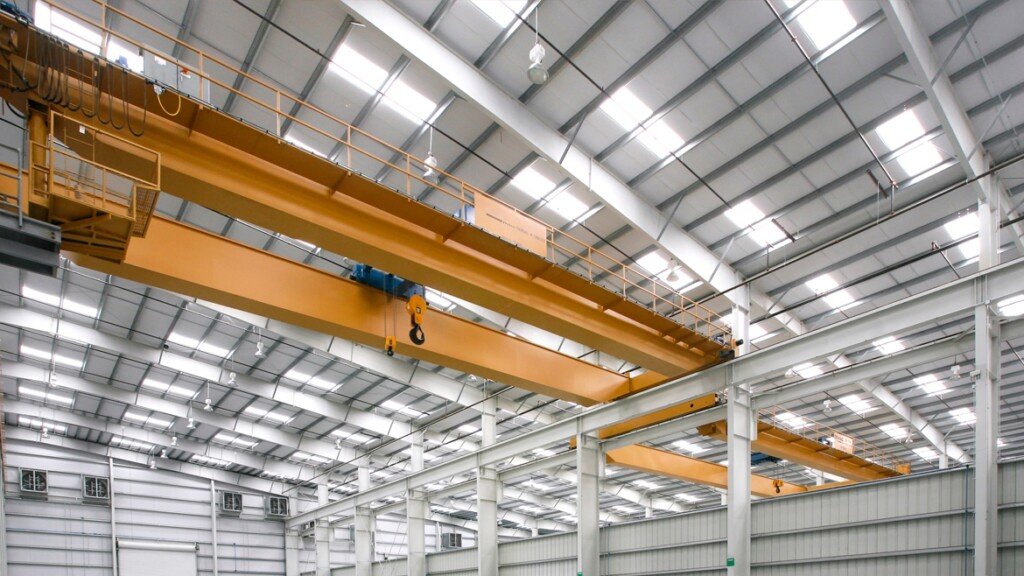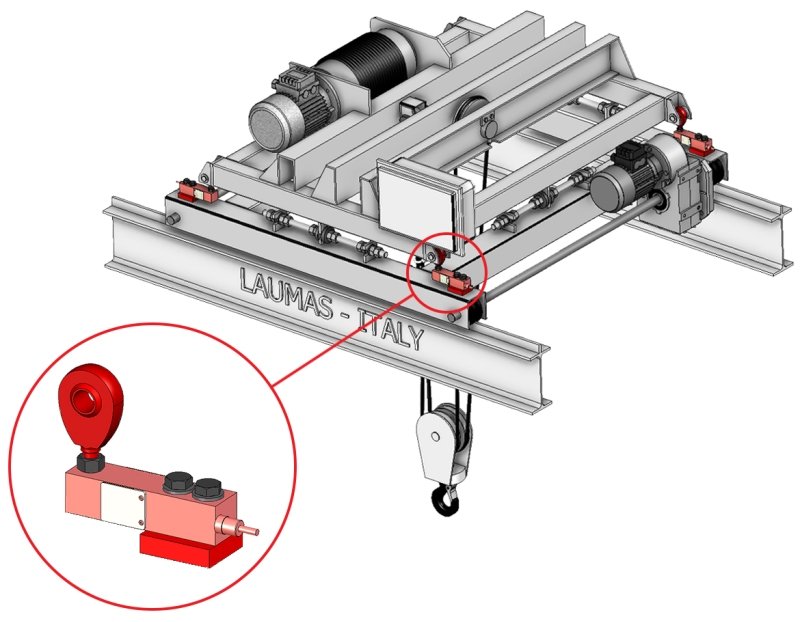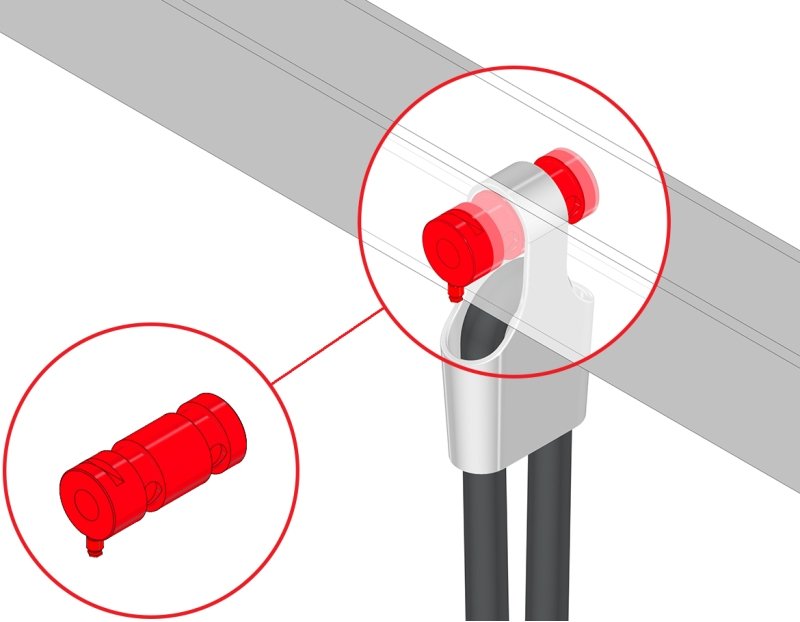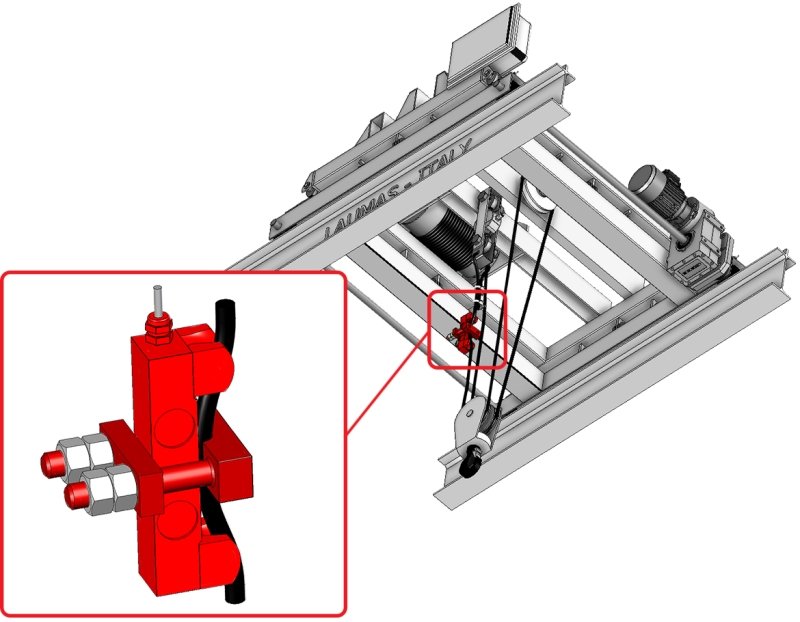Load Limiters for Bridge Cranes
The load limit for a bridge crane, also known as a overhead crane or gantry crane, depends on several factors. These factors include the crane’s design, configuration, capacity, and the specifications of the materials being lifted. Bridge cranes are used in various industries, including manufacturing, construction, and shipping, to move heavy loads horizontally along a beam and vertically using a hoist.
The load limit of a bridge crane is typically defined by its Safe Working Load (SWL) or Maximum Rated Capacity. This is the maximum weight that the crane is designed to safely lift under normal operating conditions. It’s crucial to adhere to this limit to ensure the safety of personnel and equipment.

To determine the appropriate load limit for a specific bridge crane, consider the following factors:
Crane Design and Configuration: Different types of bridge cranes have varying load capacities. Single girder cranes usually have lower capacities compared to double girder cranes.
Crane Capacity: The manufacturer’s specifications will indicate the maximum load capacity of the crane. This capacity should never be exceeded.
Hoist Specifications: The hoist is the lifting mechanism on the crane. Its capacity must match or exceed the crane’s load capacity.
Crane Span and Length: The span refers to the distance between the rails of the crane. The length of the crane runway also affects its load capacity.
Duty Cycle: The crane’s duty cycle refers to the frequency and duration of its use. Cranes with higher duty cycles may have lower load limits to ensure their longevity and safe operation.
Environmental Conditions: Factors like wind, temperature, and humidity can impact a crane’s load capacity. Cranes used in outdoor environments might have additional load restrictions.
Safety Factors: Crane manufacturers apply safety factors to the crane’s load capacity to account for uncertainties and unexpected loading conditions.
Load Distribution: How the load is distributed and attached to the crane’s lifting mechanism can impact its stability and capacity.
We have created 4 versatile designs that fit the customer’s different goals.
They are all intended for using the multichannel weight transmitter TLM8, while the types of load cells offered vary.

Solution with shear beam load cell. Ultra-accurate weighing for new constructions.
The system consists of:* 4 shear beam load cells FTP10000 kg * 4 ball joints EM-DADO (EM25DADO) with M24 thread * 4 threaded rods * 1 TLM8 weight transmitter in an IP67 box made of polycarbonate; with functional safety manual * 1 remote display RIP6100IP65 with 6 digits and 95 mm high.
The added value:
- The threaded rods act as a system to counter the lateral forces, absorbing them completely. The load cells thus sense only the orthogonal force, i.e., the downward force.
- The TLM8 weight transmitter, installed directly on the frame, replaces the junction box and performs its task.
- The 5 relay outputs of TLM8 act as a load limiter: they can be programmed as safety thresholds to stop the operation of the bridge crane in the event of system overload. By setting the total capacity of the bridge crane (in this case 20000kg) as the threshold, the bridge crane will lock if the raised load exceeds the threshold.
- The large-digit remote display helps the operator have direct feedback of the weight that is being lifted while maneuvering the bridge crane with the remote control.

Solution with tension load cell. Precise weighing for new or existing bridge cranes.
The system consists of:* 1 tension load cell CTL10000 kg * 2 ball joints EM-DADO (EM30DADO) with M30 thread * 4 threaded rods * 1 TLM8 weight transmitter in an IP67 box made of polycarbonate; with functional safety manual * 1 remote display RIP6100IP65 with 6 digits and 95 mm high.
The added value:
- The load cell is very easy to install on existing bridge cranes.
With a simple modification of the rope already on the structure, good system accuracy can be achieved. - The joints applied to the load cell enable it to be oriented and receive the force at right angles even when the angle of the rope changes in relation to the structure.
This ensures that the load cell does not make any weighing errors and ensures good accuracy and repeatability.

Solution with pin load cell. Weighing and load limiting for new or existing bridge cranes.
The system consists of:* 1 pin load cell LAU 5000 kg * 1 TLM8 weight transmitter in an IP67 box made of polycarbonate; with functional safety manual * 1 remote display RIP6100IP65 with 6 digits and 95 mm high.
The added value:
- It is easy to install on existing bridge cranes. Simply replace the mechanical pin that acts as a rope anchorage with an equivalent measuring pin, that is, a pin load cell, which is perfectly interchangeable from a mechanical point of view.
- Pin load cells are particularly compact and safe and have a high safety coefficient.
- This solution makes it possible to combine a load limiter and a weighing system together with reasonable precision.
- It’s adaptable to any need. In addition to the standard LAU load cell, it is possible to design and build a custom pin load cell, based on the design provided by the customer.

Solution with wire rope load cell. Load limiter for existing bridge cranes.
The system consists of:* 1 load cell for wire rope measuring FUN, with maximum tension on the rope 10000 kg * 1 TLM8 weight transmitter in an IP67 box made of polycarbonate; with functional safety manual
The added value:
- No changes are made to the system
- Installation is simple, fast and non-intrusive
- The load limiter function is carried out by the 5 relay outputs on the TLM8.
Simply set the total capacity of the bridge crane as a safety threshold and the bridge crane will lock if the weight value of the lifted load exceeds the set threshold.
It’s important to consult the crane manufacturer’s documentation and guidelines to determine the specific load limit for a particular crane model. Additionally, adhering to safety regulations and guidelines set by relevant authorities and organizations is crucial to ensuring the safe operation of the bridge crane.
Keep in mind that load limits are essential for preventing accidents, avoiding damage to equipment and structures, and ensuring the overall safety of personnel in the vicinity of the crane.

